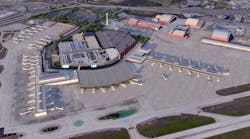WASHINGTON - The latest version of the FAA's ten-year prognosticating event, its annual Forecast Conference held here Feb. 28-Mar. 1, is back to predicting that the air carrier industry should see a billion passengers per year by the end of the forecast period. The two hottest items of interest at the conference include the entry this year of the new very light jets (VLJs) and a Congressional reauthorization funding debate that will be ongoing for the next 18 months.
Regarding theVLJs, at this point no one can clearly predict their ultimate impact on the marketplace, but FAA - and the General Aviation Manufacturers Association - foresee some 100 units entering the market this year, with another 350-500 units coming off the assembly line for several years to come. While some see the VLJs as having a significant impact on the corporate aviation sector, the biggest wildcard here seems to be their integration into the air taxi (FAR Part 135) market. Several firms are positioning their futures on this concept, which could generate revenues/activity for fixed base operations and airports as well. On the latter, it's predicted that many airports which traditionally have not been airfields used by corporate aviation will begin to see such activity.
The funding debate to date is squaring off into two distinct areas: 1) FAA and ATA (Air Transport Association) see a need to come up with a more "cost-based" user fee system, which is expected to draw more tax revenues from corporate aviation; and 2) general aviation/bizav groups who see the current method of fuel excise taxes as being the fairest approach. In simplest terms, the airlines argue that many of the tax revenues generated by them for the Aviation Trust Fund support an ATC system used by others and investment in secondary (reliever) airports which they don't access. GA groups counter that the system was created for the air carriers, and the reliever airports exist to keep commercial airports less congested so that the carriers have more complete access. And, of course, central to this debate is the modernization of the air traffic control system.
When it comes to funding, we've been here before. Chip Barclay, president of the American Association of Airport Executives perhaps said it best when he called for FAA and industry to come up with a reliable, stable funding equation that will be predictable for the long term.
Thanks for reading.



